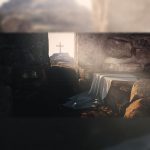Land of the Bible: Negev and more
This series provides a comprehensive exploration of the Shephelah region, including its valleys and significant ancient towns. Additionally, it delves into the Negev and the rugged Wilderness locations of Masada and Qumran, providing a rich and informative understanding of the historical significance of these areas in the Old Testament.
Ep. 1 Tel Gezer Part 1
Gezer was a strategically located city that guarded a branch of the Via Maris. It was a city given to Solomon as part of the dowry of Pharaoh’s daughter. It was also one of the three chariot cities of Solomon (I Kings 9:15-17). The Canaanite High Place illustrates the function of matsevot, the pillars that were to be torn down by the Israelites when they conquered Canaan (Deut 7:5).
Ep. 2 Tel Gezer Part 2
As Tel Gezer is mentioned alongside Megiddo and Hazor, we can anticipate it sharing certain characteristics with these cities; and indeed it does, such as possessing a large water system and a triple chambered gate, to name a few.
Ep. 3 Beit Shemesh Part 1
This site in the Sorek Valley is in the Shephelah, the low lands between the central hill country and the coastal plain – a buffer zone between the Israelites and the Philistines. The Sorek is one of four valleys that drain the hill country to the coast. These are the Ajalon (Joshua); the Sorek (Samson); the Elah (David); and the Bet Guvrin (Micah).
Ep. 4 Beit Shemesh Part 2
In this video, we review the incidents of the art movements. The ark was sent back from the Philistines and it arrived at Bet Shemesh. After their tragic curiosity, they sent to Kirjath Jearim to take the ark there because it had been a curse to them (1 Sam 4-7).
Ep. 5 Tel Azekah
Perched on a hill, this site is visited not because of its archaeology, but because of its marvelous view of the Valley of Elah and how it comes down from the Hill Country to the Philistine Plain. On that plain is the city of Gath, the home of Goliath.
The events of 1 Samuel 17 are brought to life in the Valley of Elah, where the left flank of the Philistine army was stationed at Azekah. Their position stretched around the valley to the right flank at Socoh, while the Israelites were positioned on the facing hill, directly in front of Azekah. The Elah brook, also known as the wadi, is easily traceable through the valley. The exact location of the conflict between the two armies is believed to have taken place somewhere on the Philistine side of the wadi.
Ep. 6 Beit Guvrin Part 1
Known as Maresha in OT times (Micah 1:15), Beit Guvrin was known for its soft limestone chalk which caused many functions of life to be carried on underground. A columbarium and an olive press are first featured. The olive press affords an opportunity to explain how olive oil played such a large role in life.
Ep. 7 Beit Guvrin Part 2
Two more aspects of the “underground” life of people who lived in Maresha/Eleutheropolis are explored in this video.
The Sidonian Cave is an elaborate tomb of a large Gentile family that had relocated to the Shephelah during the Hellenistic Period of 300-100 BC. The remarkable paintings of animals, both real and mythical, are in the frieze above the niches for burial.
The Bell Caves are actually the ruins of a large number of caverns that were dug from above and then spread out to “harvest” the soft chalk of this area for building purposes. As the workers progressively dug down and outward, the bell shaped caverns eventually collapsed into one another.
Eleutheropolis also had an amphitheater and grew to be very large during the Crusader period and eventually became an Arab village called Bet Guvrin.
Ep. 8 Lachish
The excavation of one of the major strongholds in Judea has revealed a large siege ramp, a long entryway, and a gate where the famous Lachish Letters were found. Sennacherib, who conquered Lachish, described this victory on a large bas relief in his palace, which is now located in the British Museum. During the Babylonian Conquest, Lachish and Azekah were the only fortified cities left in Judah, as mentioned in Isa 37:8 and Jer 34:7.
Ep. 9 Tel Beersheba Part 1
The “capital of the Negev” was well known to the Patriarchs and was home to both Abraham, Isaac, and Jacob at different times. The name means “well of the oath” or “seven wells.” The role of water is important and the well at the gate of the city illustrates that fact.
A horned altar found there illustrates how Israelites often worshipped wrongly at sites other than Jerusalem, an act condemned by the prophets (Amos 5:5; 8:14).
Ep. 10 Tel Beersheba Part 2
This video is Part 2 of Tel Beersheba. We see that a four room house was typical of the OT house.
Ep. 11 Tel Arad
el Arad is an example of a Canaanite town that has remained relatively untouched by subsequent layers of civilization. The Israelites later settled on the citadel, where they mistakenly established a worship center with an altar. This event is documented in Numbers 21:1, 33:40, and Judges 1:16.
Ep. 12 Ben-Gurion's Desert Home
David Ben Gurion, the first Prime minister of Israel, settled in this kibbutz, "Sde Boker", as an example to Israelis to settle the Negev.
Ep. 13 Nahal Zin
Nahal Zin is possibly where the Children of Israel passed on their way to the Land of Canaan.
“For when the community rebelled at the waters in the Desert of Zin, both of you disobeyed my command to honor me as holy before their eyes. These were the waters of Meribah Kadesh, in the Desert of Zin” (Num. 27:14 NIV)
Ep. 14 Timna Park
Timna Park is a valley that has many natural formations such as “Solomon’s Pillars.” It's an ancient temple used by the Egyptian laborers in the mines. The temple was used for the worship of Hathor.
Ep. 15 Tabernacle Model Pt 1
The model of the tabernacle in Timna Park is sponsored by the Southern Baptists. It's is a full scale model. The guide in the video emphasizes the spiritual typology of the mishkan.
Ep. 16 Tabernacle Model Pt 2
The layout of the tabernacle in the Old Testament consisted of three main areas: the Outer Court, the Holy Place, and the Holy of Holies. In the Outer Court, there were two significant objects - the Altar of Burnt Offering and the Laver. Inside the Holy Place, there were three items - the Menorah, the Table of Showbread, and the Incense Altar. Finally, in the Holy of Holies, there was only one object - the Ark of the Covenant.
Ep. 17 Masada Part 1
Masada is of the three desert fortresses of Herod the Great, It may have been referenced in David’s flight from Saul, but reached its “glory” under Herod and played out a dramatic and tragic demise under the Zealots.
Ep. 18 Masada Part 2
This video shows the huge storerooms, the three tiered northern palace, and the synagogues installed in the wall by the Zealots.
Ep. 19 Masada Part 3
The siege camps and the siege ramp illustrate the by-the-book warfare of the Romans. Herod’s palace and swimming pool meant little to the Zealot defender who inserted living quarters, cooking facilities, and purification pools for their own purposes.
Ep. 20 Ein Gedi
The magnificent Nahal David, with its stunning waterfall, creates a lush environment that sheds light on David's choice to seek refuge from Saul at Ein Gedi (1 Sam 23:29-24:1).
Ep. 21 Qumran Part 1
The Qumran, which was possibly the OT City of Salt mentioned in Joshua 15:62, later became home to a settlement of Essenes. It was in this settlement that the famous scrolls were copied and eventually discovered in 11 surrounding caves. Among the scrolls found in Cave One were two complete copies of Isaiah, the Manual of Discipline, the War of the Sons of Light and Darkness, a commentary on Habakkuk, an Aramaic paraphrase of Genesis, and a Psalm type composition, making up the original seven scrolls.
Ep. 22 Qumran Part 2
The needs of this isolationist sect were serviced by a tower, a scriptorium, and a refectory. Cave Four in the marl cliff proved to be the “mother lode” with over 800 manuscripts, the majority of which were Biblical, but many sectarian documents were also found. It is possible that John the Baptist spent time here, since the Essenes were known for raising orphans. The Essenes and John the Baptist shared a common emphasis on immersions and Isa 40 played a big role among them. However, their differences should not be overlooked.
Other Series You May Like

The Risen King

The Promised King

